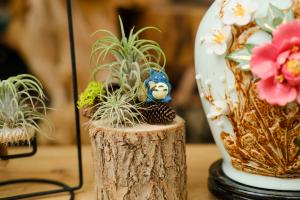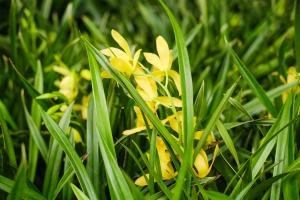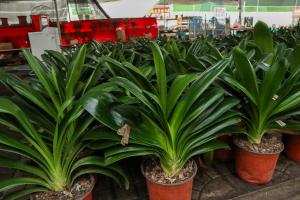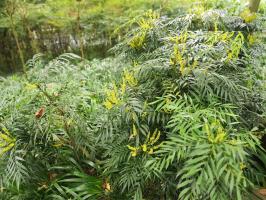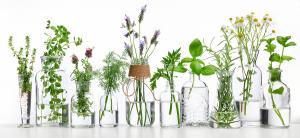Understanding Flowering Plants: An Introduction
Flowering plants are a type of vascular plant that produce flowers as part of their reproductive process. Most familiar plants, such as trees, shrubs, vines, and crops, belong to this group. These plants are classified as angiosperms, which means "enclosed seed" and refers to the plants' reproductive structures that are enclosed in flowers.
The Anatomy of a Flowering Plant
A flowering plant is made up of several structures that work together in the process of reproduction. The male reproductive structures are the stamen, which is composed of the anther and filament, while the female reproductive structures are the pistil, which includes the stigma, style, and ovary. Flowers also have petals, which are often brightly colored to attract pollinators, and sepals, which protect the flower bud before it blooms. The way these structures are arranged can vary between different species of flowering plants.
How Flowering Plants Reproduce
The reproductive process of a flowering plant involves the transfer of pollen from the anther of a stamen to the stigma of a pistil. This can occur through self-pollination or cross-pollination, where pollen is transferred between different plants. Once the pollen reaches the stigma, it travels down the style and fertilizes an ovule in the ovary. The fertilized ovule develops into a seed, while the ovary develops into a fruit that surrounds the seed. This process allows flowering plants to reproduce and create offspring.
The Importance of Flowering Plants
Flowering plants have several important roles in the ecosystem. Many crops that humans rely on for food, such as wheat, rice, and corn, are flowering plants. They provide habitat and food for pollinators such as bees, butterflies, and hummingbirds. Flowering plants also help to produce oxygen and remove carbon dioxide from the atmosphere through the process of photosynthesis. Additionally, plants have several medicinal properties and have been used for centuries to treat various ailments.
Conclusion
In summary, flowering plants are a diverse and important group of plants that play a crucial role in the ecosystem. They have unique reproductive structures and processes that allow them to reproduce and create new offspring. Understanding the anatomy and function of these plants can provide insight into the natural world around us and the ways in which humans interact with it.

 how many times do yo...
how many times do yo... how many planted tre...
how many planted tre... how many pine trees ...
how many pine trees ... how many pecan trees...
how many pecan trees... how many plants comp...
how many plants comp... how many plants can ...
how many plants can ... how many plants and ...
how many plants and ... how many pepper plan...
how many pepper plan...

